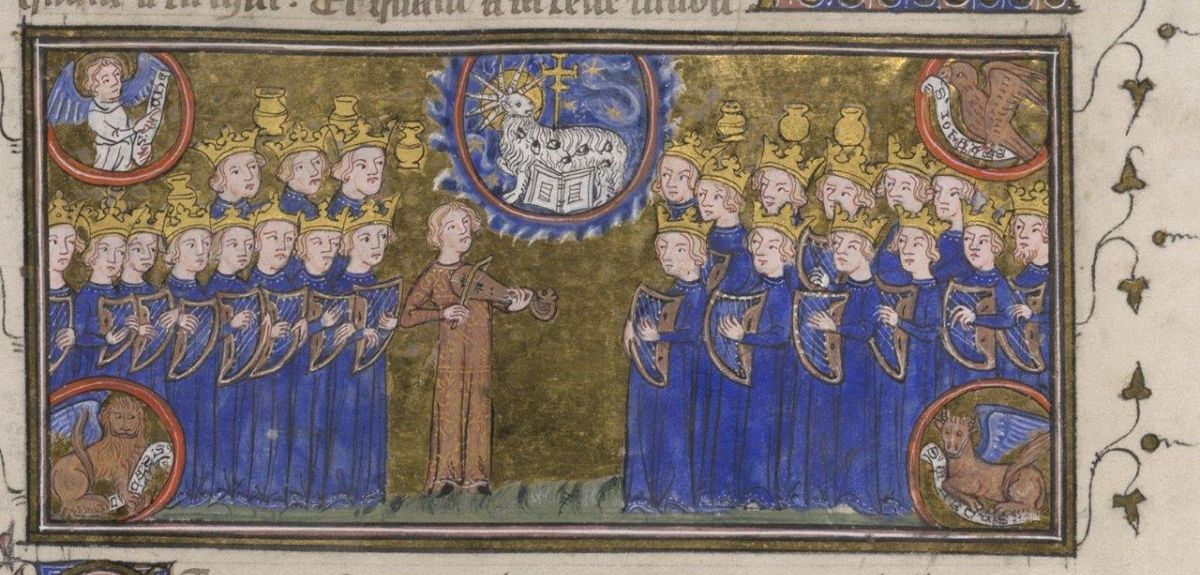
The Apocalypse in Oxford launches: it’s not the end of the world
From deadly pandemic to asteroid strike, most of us can name a few ways the world might end. The end of the world as we know it fuels Hollywood plots and bestsellers. But is this a modern phenomenon?
Dr Daron Burrows, of the Faculty of Medieval and Modern Languages, has launched a new project, The Apocalypse in Oxford, to digitise a collection of medieval texts which suggest the apocalypse has been in fashion for much longer than you might think.
'There was something of a vogue for illustrated manuscripts of the Revelation – the Biblical Apocalypse - in the 13th century,' says Dr Burrows. 'There were at least 80 produced between the 13th and 15th centuries, of which around half originated in Britain.'
The Bodleian Library currently holds five different Anglo-Norman copies of the French Prose Apocalypse, vividly illustrated with beasts, angels and other scenes from the Book of Revelation. Dr Burrows will scan and transcribe the books, which will then be made available to the public online.
'There are two main factors in the popularity of these books,' said Dr Burrows. 'In the 12th century, Joachim of Fiore, a Calabrian abbot, wrote a gloss on the Book of Revelation which seemed to indicate that the world would end in 1260, and later commentators thought the Mongol invasion of Eastern Europe confirmed his interpretation. This may have sparked some popular interest in the Apocalypse.
'But perhaps the more significant factor is that these books were very expensive luxury items. As far as we know about their provenance, the majority were commissioned and owned by noble families rather than, for example, religious institutions. These families may well have owned an Apocalypse manuscript less for its moral or spiritual lessons than to manifest their wealth and prestige.'
Despite their origins in the British Isles, the five books which Dr Burrows will digitise are written in French. They include a translation of the Book of Revelation, and a commentary whose origins are not yet clear.
'After the Norman Conquest, French became the language of power and authority in Britain,' said Dr Burrows. 'All administration was carried out in French, the English aristocracy quickly began to use it, and it became the language of literature.
'Perhaps paradoxically, French was used less frequently in material written in France itself during this period: indeed, two-thirds of all surviving 12th-century manuscripts of French literature originated in Britain.'
The form of French which was used in the British Isles was mainly influenced by the Norman dialect which William the Conqueror brought with him, but Anglo-Norman also features traits from the other regions from which the Conqueror's troops were drawn.
It was also modified by the accents of British speakers. However, it can be difficult for philologists to distinguish between different dialects in written text, because spelling was not standardised.
'When texts are written in verse, the rhymes can often provide clues regarding the dialect in which the poem was originally written,' said Dr Burrows. 'Since there was no standardised orthography, scribes copying a text would commonly change spellings to match their own regional conventions.
'Changing the sounds at the rhyme, however, would require more drastic changes, and so rhymes often preserve the phonology of the original text.'
For example, in medieval Continental French, as in modern French, it would be impossible to rhyme nul and seul, but in Anglo-Norman, the assimilation of sounds makes this a common rhyme.
Such comparisons allow philologists to state with some certainty whether a text originates from France or from Britain. However, the five Apocalypses in the Bodleian are all in prose. As part of the project, Dr Burrows will analyse the texts in detail, aiming to shed light on their provenance.